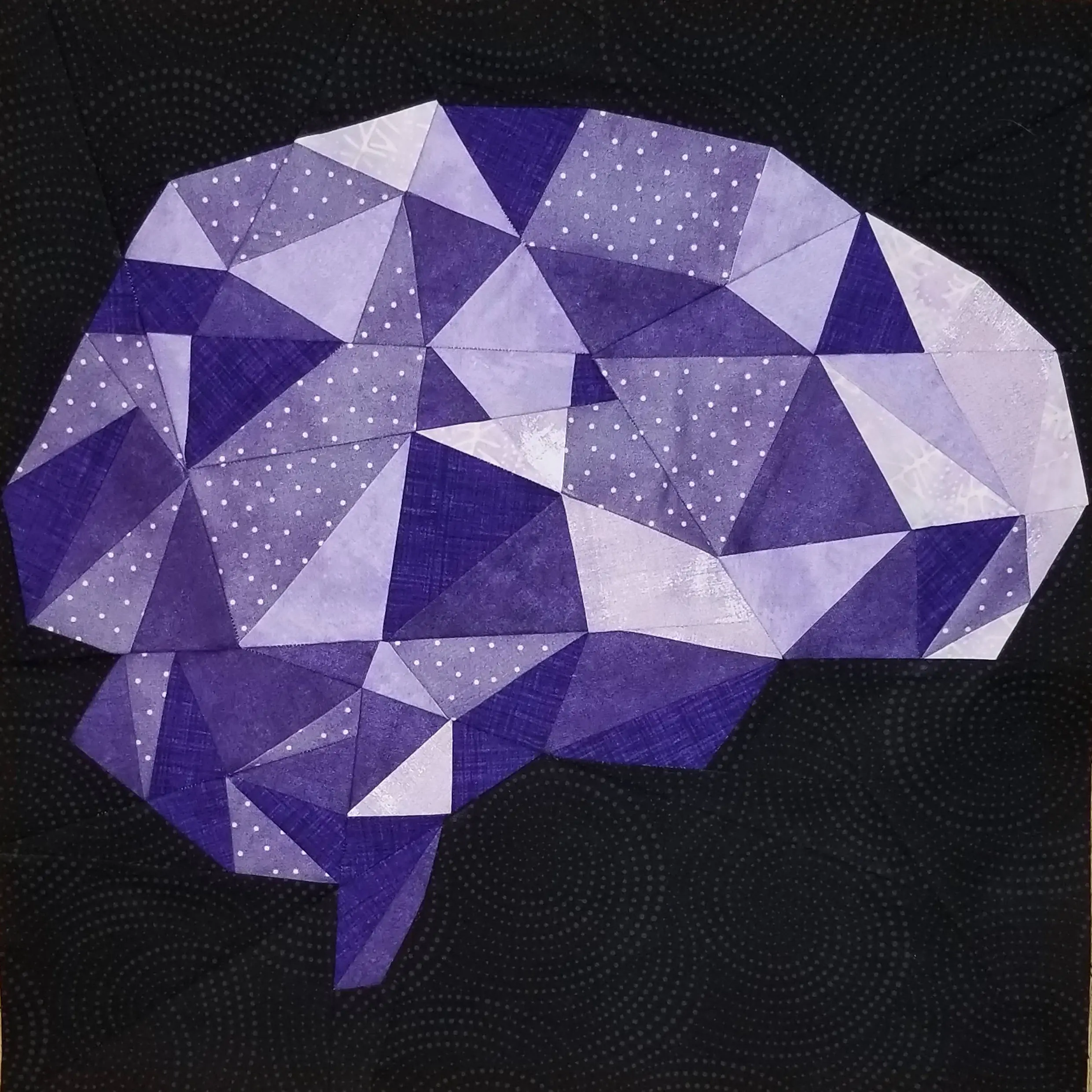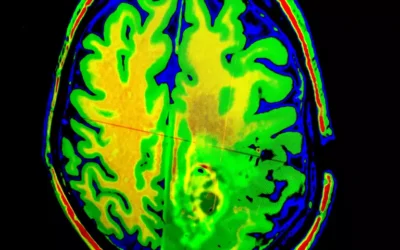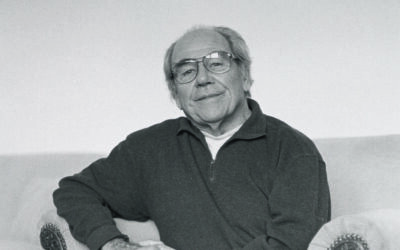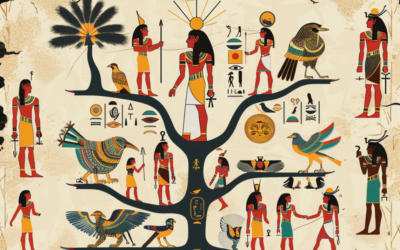The History of Personality Psychology?
Personality psychology is the study of the patterns of thoughts, feelings, and behaviors that make each individual unique. Throughout history, philosophers, scientists and psychologists have grappled with questions of identity, self-concept, and individual differences that form the core of this field. In this article, we’ll dive into the fascinating history of personality psychology, exploring the key theorists, tests, and typology systems that have shaped our understanding of the self.
The Origins of Personality Psychology
The roots of personality psychology can be traced back to ancient Greek philosophy. Hippocrates, the famous physician, proposed that personality was influenced by the balance of four bodily fluids or “humors”: blood, yellow bile, black bile, and phlegm.[^1] While this theory has been discredited by modern science, it introduced the influential idea that personality has a biological basis.
Centuries later, in the late 1700s, Franz Joseph Gall developed the pseudoscience of phrenology. This theory held that personality traits could be discerned from the shape and size of bumps on the skull.[^2] Although also debunked, phrenology helped popularize the notion that different mental functions could be localized to specific brain regions.
The first recognizably modern theory of personality emerged in the early 20th century with Sigmund Freud’s psychoanalytic perspective. Freud proposed that human behavior was the result of a dynamic interplay between three components of the mind: the id (instinctual drives), the ego (the realistic mediator), and the superego (the moral conscience).[^3] While many of Freud’s ideas are controversial today, his emphasis on unconscious processes laid the foundation for subsequent explorations of the hidden depths of the psyche.
As the field of personality psychology began to take shape in the 1930s and 40s, Gordon Allport emerged as an influential figure. Allport argued that personality was biologically determined but shaped by both internal and external forces over the course of development. He coined the term “personality” to describe the dynamic organization of psychophysical systems that determine an individual’s unique adjustment to their environment.[^4] Allport’s emphasis on the importance of the individual set the stage for the trait theories that would dominate personality research in the coming decades.
Trait Theories and the “Big Five”
In contrast to Freud’s focus on the unconscious mind, trait theorists conceptualize personality as a collection of stable characteristics that influence behavior across situations. Early trait researchers like Gordon Allport, Raymond Cattell, and Hans Eysenck used the statistical technique of factor analysis to identify clusters of co-occurring traits, such as extraversion and neuroticism.[^5]
In the 1980s and 90s, a growing consensus emerged around five broad dimensions that capture the main elements of personality. This “Big Five” model, also known as the Five Factor Model, comprises the following traits:
Openness to Experience:
This dimension captures curiosity, imagination, and willingness to try new things. People high in openness tend to be creative and unconventional, while those low in openness are more pragmatic and traditional.
Conscientiousness:
This trait reflects organization, self-discipline, and reliability. Highly conscientious individuals are diligent and achievement-oriented, while less conscientious people may be more laid-back and spontaneous.
Extraversion:
Extraversion encompasses sociability, assertiveness, and positive emotionality. Extraverts are outgoing and energetic, while introverts are more reserved and solitary.
Agreeableness:
This dimension measures compassion, cooperation, and trust. Agreeable people are warm and sympathetic, while disagreeable individuals may be more skeptical and combative.
Neuroticism:
Neuroticism refers to the tendency to experience negative emotions such as anxiety, depression, and anger. High scorers are prone to emotional instability, while low scorers are more even-tempered.[^6]
Today, the Five Factor Model is widely accepted as the most empirically robust framework for describing personality. Decades of research have demonstrated its applicability across cultures and its ability to predict important life outcomes, from job performance to relationship satisfaction.[^7] Personality assessments like the NEO Personality Inventory operationalize the Big Five traits and are used in a variety of clinical, occupational, and research settings.
Jungian Theory and the Myers-Briggs Type Indicator
While trait models focus on continuous dimensions of personality, type theories propose that people can be categorized into distinct groups based on their characteristic patterns of thought, feeling, and behavior. The most influential type theory was developed by Swiss psychiatrist Carl Jung in the early 20th century. Jung argued that people differ in their preferences for how they take in information (Sensing vs. Intuition), make decisions (Thinking vs. Feeling), and orient themselves to the world (Extraversion vs. Introversion).[^8]
In the 1940s, Katharine Cook Briggs and her daughter Isabel Briggs Myers created the Myers-Briggs Type Indicator (MBTI) as a practical application of Jung’s ideas. The MBTI assesses individuals on four dichotomies:
Extraversion (E) vs. Introversion (I):
Extraverts are outwardly focused and gain energy from social interaction, while introverts are inwardly focused and recharge through solitude.
Sensing (S) vs. Intuition (N):
Sensors are attuned to concrete details and practical realities, while intuitives are more attuned to patterns, possibilities, and meanings.
Thinking (T) vs. Feeling (F):
Thinkers make decisions based on logic and objective analysis, while feelers prioritize values and subjective considerations.
Judging (J) vs. Perceiving (P):
Judgers prefer structure, planning, and decisive action, while perceivers are more spontaneous, flexible, and open to new information.[^9]
These four preferences combine to yield 16 distinct personality types, such as INFJ (Introverted-Intuitive-Feeling-Judging) or ESTP (Extraverted-Sensing-Thinking-Perceiving). Each type is associated with a unique pattern of cognitive strengths, blind spots, and developmental challenges.
The MBTI has become the most widely used personality assessment in the world, particularly in organizational and educational contexts. Proponents argue that it provides a rich framework for understanding individual differences and improving communication and teamwork. However, the MBTI has also been criticized for its limited scientific validity and its tendency to oversimplify the complexities of personality.[^10]
The Enneagram of Personality
The Enneagram is another influential typology system that has gained popularity in recent years. With roots in ancient wisdom traditions, the modern Enneagram was developed by Oscar Ichazo and Claudio Naranjo in the 1960s and 70s. The Enneagram proposes nine personality types, each characterized by a core motivation, fear, and path of growth:[^11]
The Reformer:
Principled and perfectionistic, Ones strive to live up to their high ideals and fear corruption.
The Helper:
Generous and people-pleasing, Twos are driven by a need to be loved and fear being unworthy.
The Achiever:
Success-oriented and image-conscious, Threes are motivated by a need to be admired and fear failure.
The Individualist:
Expressive and self-absorbed, Fours desire to be unique and fear being insignificant.
The Investigator:
Cerebral and detached, Fives are driven by a need to understand and fear being overwhelmed.
The Loyalist:
Committed and fearful, Sixes seek security and fear being without guidance.
The Enthusiast:
Fun-loving and scattered, Sevens crave excitement and fear missing out.
The Challenger:
Powerful and dominating, Eights want to be in control and fear vulnerability.
The Peacemaker:
Easygoing and self-forgetting, Nines desire harmony and fear conflict.
Each Enneagram type is thought to have a distinct worldview, communication style, and path of personal development. The system emphasizes the interconnections between types and the ways in which individuals can transcend their habitual patterns.
While the Enneagram has a devoted following among many coaches, therapists, and spiritual seekers, it has also been criticized for its lack of empirical validation. Some psychologists argue that the Enneagram typology is not well-defined and that its claims are difficult to test scientifically.[^12]
Psychologist Timothy Leary’s Interpersonal Circumplex
Another influential model of personality was developed by psychologist Timothy Leary in the 1950s. Leary’s interpersonal circumplex conceptualizes personality traits as existing on a circular continuum defined by two intersecting dimensions: Dominance vs. Submission and Love vs. Hate.[^13]
According to this model, all social interactions can be understood in terms of these two axes. For example, a “friendly-dominant” interaction would be characterized by both warmth and assertiveness, while a “hostile-submissive” exchange would involve resentment and passivity.
The interpersonal circumplex has been widely used in both personality assessment and clinical practice. Tools like the Interpersonal Adjective Scales operationalize Leary’s dimensions and locate individuals within the circumplex space.[^14] In psychotherapy, the circumplex model can help identify maladaptive relationship patterns and guide interventions to develop more flexible and adaptive modes of relating.
John Beebe’s Eight-Function Model
The Eight-Function Model, developed by Jungian analyst John Beebe, represents a contemporary extension of Jung’s psychological type theory. Beebe integrated Jung’s original formulations with findings from neuroscience and archetypes to create a complex model of the psyche.[^15]
In Beebe’s model, each of the four Jungian dichotomies (Extraversion/Introversion, Sensing/Intuition, Thinking/Feeling, Judging/Perceiving) is expressed through both an extraverted and an introverted function, yielding eight functions in total:
Extraverted Sensing (Se):
Experiencing the world vividly and in real-time
Introverted Sensing (Si):
Comparing present experiences to past impressions
Extraverted Intuition (Ne):
Generating new possibilities and connections
Introverted Intuition (Ni):
Synthesizing patterns to understand the unfolding of events
Extraverted Thinking (Te):
Applying logic to solve problems and achieve goals
Introverted Thinking (Ti):
Analyzing and refining theoretical understanding
Extraverted Feeling (Fe):
Building consensus and attending to social norms
Introverted Feeling (Fi):
Evaluating experiences based on personal values
According to Beebe, these eight functions form a dynamic hierarchy within the psyche. Each function plays a different archetypal role, such as the Hero (dominant function), Parent (auxiliary function), Child (tertiary function), and so on. The model provides a map of the lifelong journey of individuation, as the ego must learn to acknowledge and integrate shadow functions over time.
While Beebe’s model has been influential within the Jungian community, it has not been subjected to extensive empirical research. As with other Jungian ideas, the eight-function model is based primarily on clinical observation and theoretical elaboration.
The HEXACO Model of Personality Structure
In recent years, some personality psychologists have argued that the Big Five model may be incomplete. The HEXACO model, developed by Michael Ashton and Kibeom Lee, proposes six fundamental dimensions of personality:[^16]
Honesty-Humility:
This factor captures traits like sincerity, fairness, and modesty versus deceitfulness, greed, and pretentiousness.
Emotionality:
Similar to Big Five Neuroticism, this dimension describes tendencies toward anxiety, sentimentality, and emotional reactivity.
Extraversion:
As in the Big Five model, Extraversion reflects sociability, liveliness, and positive emotionality.
Agreeableness:
HEXACO Agreeableness is characterized by patience, forgiveness, and gentleness as opposed to anger and criticalness.
Conscientiousness:
This factor measures organization, diligence, and perfectionism versus sloppiness, laziness, and negligence.
Openness to Experience:
As in the Big Five, Openness describes aesthetic appreciation, inquisitiveness, and creativity.
Research has shown that the HEXACO model outperforms the Big Five in predicting certain behaviors, especially those related to ethical and prosocial conduct.[^17] The addition of the Honesty-Humility dimension seems to capture important aspects of personality that are not well-represented in the Big Five.
The DiSC Model
The DiSC model is a personality typology that is commonly used in workplace settings to improve communication, teamwork, and leadership. Developed by industrial psychologist Walter Clarke in the 1950s, the DiSC model describes four primary personality styles:[^18]
Dominance (D):
Direct, decisive, and results-oriented
Influence (i):
Outgoing, enthusiastic, and persuasive
Steadiness (S):
Patient, stable, and supportive
Conscientiousness (C):
Analytical, detail-oriented, and precise
Each DiSC style is associated with a distinct set of motivators, stressors, and behavioral tendencies. For example, high-D individuals tend to be competitive and goal-focused, while high-S individuals prioritize harmony and consistency.
The DiSC assessment is used to help individuals understand their own style and adapt their approach to work more effectively with others. While the DiSC model provides a useful framework for discussing interpersonal differences, it has been criticized for its lack of scientific rigor and its oversimplification of personality.[^19]
The Hogan Personality Inventory (HPI)
The Hogan Personality Inventory (HPI) is a widely used assessment in personnel selection and leadership development contexts. Developed by psychologists Robert and Joyce Hogan, the HPI measures seven dimensions of normal personality:[^20]
Adjustment:
Confidence, self-esteem, and composure under pressure
Ambition:
Competitive drive, leadership aspirations, and initiative
Sociability:
Extraversion, gregariousness, and social confidence
Interpersonal Sensitivity:
Tact, perceptiveness, and relationship-maintenance skill
Prudence:
Self-discipline, responsibility, and attention to detail
Inquisitive:
Imaginativeness, curiosity, and open-mindedness
Learning Approach:
Achievement-striving and interest in education and training
The HPI is based on the socioanalytic theory of personality, which emphasizes the importance of reputation and social interaction in shaping behavior.[^21] The assessment aims to predict occupational success by measuring the “bright side” traits that contribute to effective performance.
Research has demonstrated the validity of the HPI in predicting job performance across a range of industries and roles.[^22] However, as with any self-report measure, the HPI is susceptible to impression management and may not capture the full complexity of an individual’s personality.
Laurence Hillman’s Archetypal Model
Laurence Hillman, a Jungian analyst and astrologer, has developed a unique archetypal model of personality that integrates ideas from depth psychology, mythology, and astrology. Hillman’s model proposes that each individual is born with a unique archetypal configuration that shapes their personality, challenges, and life path.1
Hillman’s model is based on the twelve archetypal principles associated with the signs of the zodiac. Each archetype represents a fundamental pattern of human experience and potential:
Aries:
The Warrior – courage, assertiveness, and initiative
Taurus:
The Sensualist – stability, resourcefulness, and aesthetic appreciation
Gemini:
The Communicator – curiosity, adaptability, and mental agility
Cancer:
The Nurturer – emotional sensitivity, caregiving, and belonging
Leo:
The Performer – self-expression, leadership, and creativity
Virgo:
The Analyst – discernment, service, and pragmatism
Libra:
The Diplomat – balance, cooperation, and refinement
Scorpio:
The Transformer – intensity, depth, and regeneration
Sagittarius:
The Explorer – adventure, meaning-seeking, and expansiveness
Capricorn:
The Builder – discipline, mastery, and responsibility
Aquarius:
The Visionary – innovation, independence, and humanitarianism
Pisces:
The Dreamer – imagination, empathy, and transcendence
According to Hillman, each individual has all twelve archetypes within their psyche, but some are more prominent than others. The configuration of archetypes in a person’s birth chart provides a symbolic map of their innate strengths, challenges, and developmental tasks.
Hillman’s approach to personality is deeply grounded in the symbolic and mythological dimensions of the psyche. He argues that by cultivating a relationship with the archetypes within us, we can tap into sources of meaning, creativity, and transformation that transcend the limitations of our conditioned personality patterns.2
While Hillman’s model has gained popularity among some Jungian and transpersonal psychologists, it has not been widely researched within mainstream personality psychology. As with other archetypal approaches, Hillman’s model is based primarily on clinical insight and theoretical elaboration rather than empirical validation.
Strengths, Weaknesses, Similarities, and Differences
Each of the personality models and assessments discussed in this article offers a unique perspective on the fundamental question of what makes us who we are. While there are points of convergence between these systems, there are also important differences in their theoretical foundations, methodological approaches, and practical applications.
The trait models, such as the Big Five and HEXACO, provide a broad, empirically-driven framework for describing the major dimensions of personality. These models have been extensively researched and have demonstrated predictive validity across a range of life outcomes. However, trait approaches have been criticized for their reductionistic tendencies and their inability to capture the dynamic, contextualized nature of personality.
Type theories, such as Jung’s model and the Enneagram, offer a richer, more holistic perspective on personality. These systems emphasize the qualitative differences between individuals and the developmental challenges associated with each type. However, type models have been criticized for their lack of scientific rigor and their potential to promote stereotyping and oversimplification.
Circumplex models, such as Leary’s interpersonal circumplex, provide a useful framework for understanding the interpersonal dimensions of personality. These models have been widely used in clinical assessment and intervention. However, they focus on a relatively narrow aspect of personality functioning and may not capture the full range of individual differences.
Functionally-based models, such as Beebe’s eight-function model, attempt to integrate multiple layers of personality, including cognitive processes, emotional dynamics, and archetypal patterns. These models provide a rich, multifaceted perspective on the psyche. However, they are often theoretically complex and have not been subjected to extensive empirical validation.
Organizationally-focused assessments, such as the DiSC and the Hogan Personality Inventory, are designed to measure personality traits that are relevant to workplace performance. These tools can provide valuable insights for selection, training, and development purposes. However, they may not capture the full range of personality characteristics that are important in other life domains.
By appreciating both the strengths and limitations of different models, we can develop a more nuanced and flexible approach to exploring the endlessly fascinating landscape of human individuality.
At the same time, it is important to recognize that no personality system can fully capture the depth and complexity of the human experience. Personality is a dynamic, evolving phenomenon that is shaped by a complex interplay of biological, psychological, social, and cultural factors. Any attempt to categorize or type individuals necessarily involves a degree of simplification and generalization.
Moreover, personality assessment is not a neutral or objective process. The way we conceptualize and measure personality is inevitably shaped by our cultural assumptions, values, and biases. Historically, personality psychology has been dominated by Western, individualistic perspectives that may not fully capture the diversity of human experience across cultures.



























0 Comments